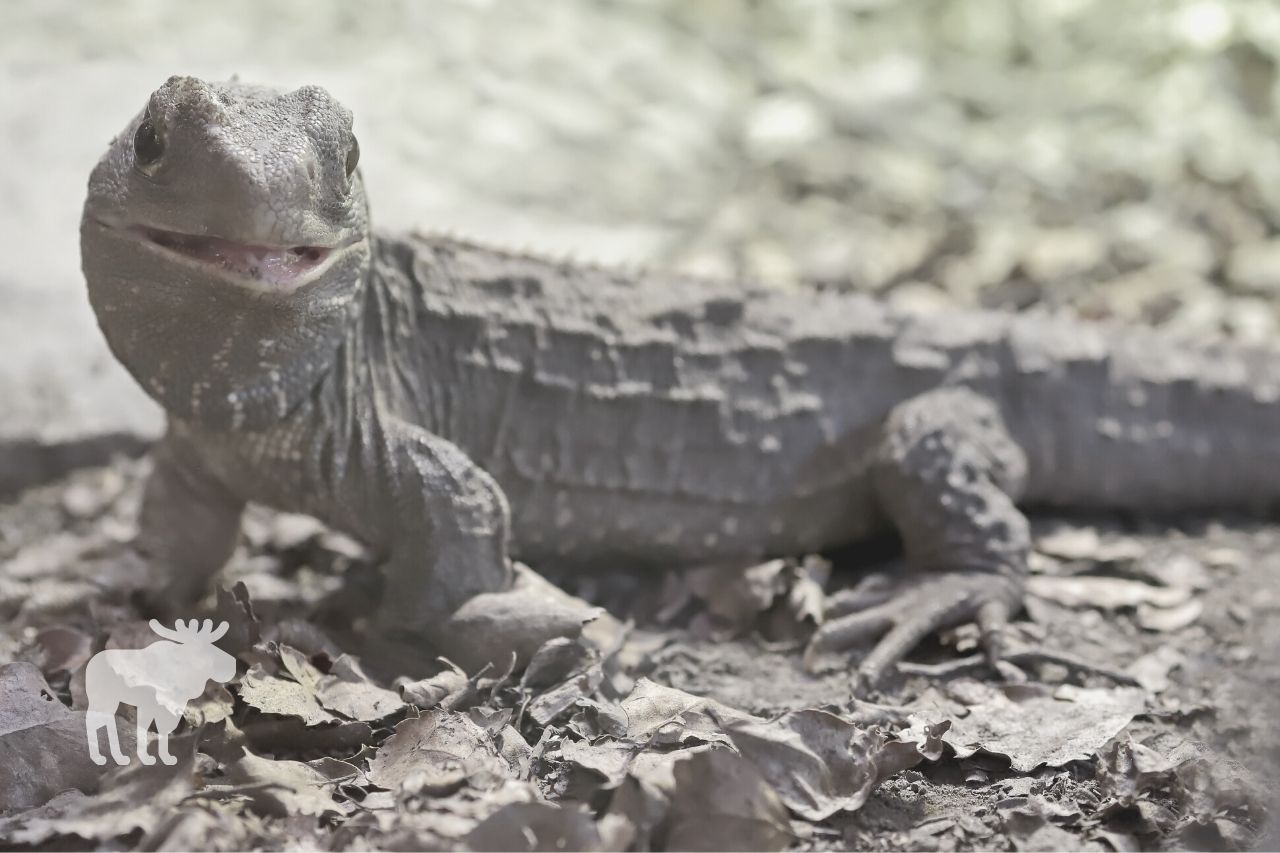Tuataras are fascinating and adorable reptiles. If you’ve ever seen a picture or video of one, you probably wanted to know more about it. What is a tuatara exactly? Where does it live? More specifically, what biome does the tuatara live in? Keep reading! In this article, we’ll answer all of these questions and more.
What You'll Learn Today
What is a Tuatara?

Tuataras are unique reptiles known for being the last remaining species of an ancient order known as Sphenodontia. This order of reptiles has existed for as long as 250 million years and was thriving during the time of the dinosaurs.
Tuataras look like lizards but are in a class all their own. They are about 1 to 2 feet long, weigh 1 to 2 pounds, and have long, classic-reptilian tails which they can shed and regrow if necessary.
Tuataras walk on all fours close to the ground. They have thick skin that comes in various shades of olive green to gray-green to brown.
They have three rows of teeth–two on top and one on the bottom. These rows of teeth fit together like scissors.
Tuataras eat a variety of insects and other invertebrates. They also will eat small animals such as frogs, sea-bird eggs and chicks, and even juvenile tuataras.
They have a third eye on top of their head, though it becomes covered in scales shortly after birth. This eye can detect light and is thought to be used for vitamin D production and regulation of various physical cycles.
Tuataras have one of the longest reproduction periods of any living species. It takes them two to four years to produce each brood of babies.
Check out this video to learn more about tuataras:
Where Do Tuataras Live?
Tuataras are native to New Zealand, and this is the only place in the world where they are found in the wild. A small amount of tuataras are kept at zoos in various parts of the world.
Tuataras were once native to New Zealand’s mainland, but they eventually went extinct there and had to be reintroduced in a sanctuary meant to preserve and protect them. This sanctuary is found on the North Island.
Tuataras continue to live on a variety of smaller islands found in the Cook Strait, which divides the North and South Islands of New Zealand. They can be found in the wild on about 30 of these islands, some of which are off-limits to humans in an effort to preserve the tuatara populations.
Though the International Union for the Conservation of Nature technically lists tuataras with a status of least concern, the reptiles have benefited from legal protection and recovery programs in New Zealand since 1895. There are thought to be just 60,000 to 100,000 tuataras in existence today.
What Biome Does the Tuatara Live In?
The islands where tuataras live are considered to be in the chaparral biome. This biome is found on every continent except Antarctica and extends about 30 to 40 degrees on either side of the equator.
The chaparral biome is formed where cool waters from seas and oceans meet hot land masses. This biome is characterized by hot, dry summers and cool, rainy winters, but it may have a diverse array of plant and animal life depending on the specific region.
The islands where the tuataras live tend to be rocky with sparse areas of vegetation. The air is usually humid, and average temperatures tend to stay between 45 and 75 degrees F.
Unlike many other reptiles, tuataras seem to handle colder temperatures better than hotter temperatures. They are nocturnal creatures in part because they can only take the heat up to about 82 degrees F.

The chaparral biome is a difficult one for many types of animals; at the same time, specially adapted forms of wildlife seem to thrive in these hot, dry, windy and somewhat barren regions.
On the islands of New Zealand, several notable species share the habitat with tuataras. These species include:
- Frogs: Various types of frogs live on these small islands close to the water. These frogs make up a significant minority of the tuatara’s diet.
- Lizards: A variety of lizards can also be found in the same habitat as tuataras. Most are small, and like frogs, they frequently become the tuataras’ prey.
- Kiwis: Kiwis are flightless birds native to New Zealand. They are endangered birds found mostly on the mainland islands, but they can also be found on some of the same islands as the tuataras.
- Seabirds: Many different kinds of seabirds can be found throughout New Zealand, including on the islands of the tuataras. Some of these birds include albatrosses, prions, and some types of penguins.
- Giant weta: The giant weta is a large cricket-like insect endemic to New Zealand. It makes up a large part of the tuatara’s diet.
Do Tuataras Hibernate?
As mentioned, tuataras handle cold better than heat, but they have a limit to how low the temperature can go as well.
Tuataras may remain active even when temperatures are in the low 40s F, but once it drops below about 41 degrees F they will go into a period of hibernation.
They may come out of hibernation on warmer days during the winter to bask in the sun.
Conclusion
Tuataras live in the chaparral biome, an area 30 to 40 degrees north and south of the equator known for its sparse lands and hot, dry summers. Tuataras, the last remaining reptiles of their ancient family, share their habitat with a variety of unique animals, including the flightless kiwi bird and the cricket-like weta.